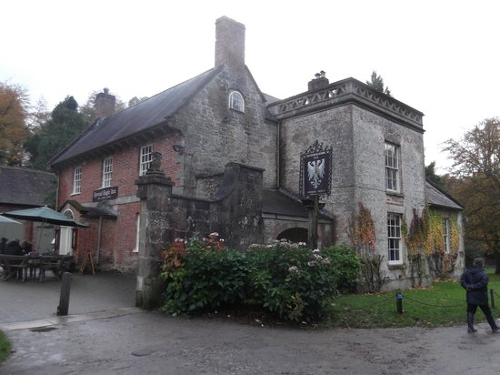England's Glory
Thousand Best Churches
It's all well and good having your tweed suits and mackintoshes and wax jackets and country shoes with Dainite soles, but you need places to wear them. A trip to a well-preserved little town or village always provides a fitting backdrop for such a wardrobe. Ugly places don't deserve your custom.Naturally, you'll visit a pub like those owned by the National Trust, or a nice tea rooms. You should also pay a visit to the church. As we've said many times before, pubs and churches are often intertwined as anchors for the community.
England's Thousand Best Churches by Simon Jenkins [Amazon] (on Penguin's Allen Lane imprint) is a useful starting point for learning about the history of England's parish churches on a county-by-county basis. From the introduction:
Parish churches are England's glory. They enshrine the history of a people, most of whom have lived far from the capital, court and Parliament. These people — their art, architecture and faith — are seldom recorded or celebrated. The parish church is their public monument.
These churches house a gallery of vernacular art without equal in the world.In his review, Auberon Waugh advised: 'Every house in England should have a copy of this book.'
Of course, the list is entirely subjective and will elicit debate about what is and isn't included, but it's a useful reference book for those churches that are described. You can take photos of the relevant pages before visiting. Saves lugging the thing about.
Simon provides a star system and general description of each church and its surroundings, homing in on the finest historical and architectural details. He visited two thousand to make his selections. That's quite a slog.
Kilpeck Church in Herefordshire
Survivor of Puritan purges of graven images and adornments, the incredible Romanesque Church of St Mary and David in Kilpeck, Herefordshire is an 'extraodinarily complete and decorative Norman church' — and was always going to be included in Simon's book. No debate.The carvings on the church date from the time of the Crusades. The history is sketchy, but there are indications that there has been a place of worship on the site since 640.
Many visitors look for the example of a sheela na gig (below). The gargoyle (or hunky punk as we say in Somerset) may serve as some kind of hellish warning against lust or throwback pagan fertility symbol — take your pick.
Kilpeck Inn 1750
Many visitors to Kilpeck also seek out the excellent refreshments at the nearby Kilpeck Inn. The pub also has some history, dating around 1750.Sound and Vision
Ancient churches aren't just about the visuals though. They also have their own acoustic, and an atmosphere that tends to subdue as we enter. We can only imagine the countless services and ceremonies that have been performed as we drop a fiver into the donation box.As we were discussing marriage advice with Harvie & Hudson recently, one wonders how many marriages would have been performed at the Kilpeck site. Would a latter-day groom be standing where a crusader once married? Fanciful thought.
Kilpeck church has a tasty couple of bells to let rip a peal of wedding bells. (I'm not sure they are equiped for a Stedman Caters.) They won't be the oldest bells though. St Lawrence Church in Ipswich has the oldest ring of church bells in the world, dating around 1450. Now a community centre, the church did not make it to Simon's book.












